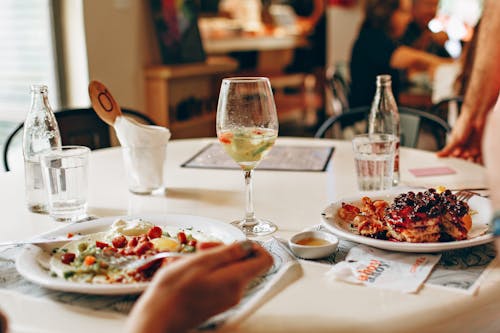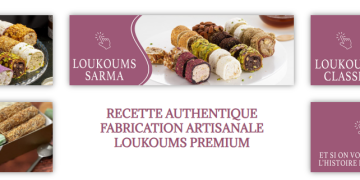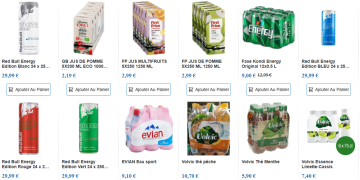
Wine has long been considered one of the ultimate complements to a meal. When paired correctly, wine can elevate the flavors of a dish, creating a harmonious dining experience. This essay explores the art of wine pairing, detailing the perfect food accompaniments for various types of wine. From robust reds to crisp whites, and everything in between, we’ll delve into the nuances of each pairing to enhance your culinary enjoyment.
Understanding Wine Pairing
The Basics of Wine Pairing
Wine pairing is the process of matching food dishes with wine to enhance the dining experience. The goal is to create a balance where neither the food nor the wine overpowers the other. There are a few fundamental principles to consider when pairing wine with food:
- Balance Intensity: Match the weight and intensity of the wine with the weight and intensity of the food. Light dishes pair well with lighter wines, while heavier, more robust dishes require full-bodied wines.
- Complement and Contrast: Pair wines that complement the flavors in the dish or create a pleasant contrast. For example, a sweet wine can balance a spicy dish, while a wine with high acidity can cut through the richness of a fatty dish.
- Consider the Sauce: Often, the sauce or preparation method of the dish has a greater impact on the pairing than the main ingredient. Pay attention to these details when selecting a wine.
Types of Wine
Wines can be broadly categorized into red, white, sparkling, and dessert wines. Each category has its own set of characteristics and suitable pairings.
- Red Wine: Known for their bold flavors and tannins, red wines are typically paired with hearty, rich dishes.
- White Wine: These wines are generally lighter and more acidic, making them ideal for pairing with lighter dishes.
- Sparkling Wine: The effervescence of sparkling wine makes it versatile, often used for celebratory occasions and paired with a wide range of foods.
- Dessert Wine: Sweet wines are typically reserved for pairing with desserts or as an after-dinner drink.
Pairing Red Wines
Cabernet Sauvignon
Characteristics: Full-bodied, high tannins, dark fruit flavors (blackcurrant, blackberry), often with notes of oak, tobacco, and pepper.
Perfect Pairings:
- Steak and Red Meat: The tannins in Cabernet Sauvignon cut through the richness of red meat, creating a balanced flavor profile. Try pairing it with a grilled ribeye or a juicy burger.
- Aged Cheeses: Hard cheeses like cheddar and gouda complement the robust flavors of Cabernet Sauvignon.
Merlot
Characteristics: Medium to full-bodied, softer tannins than Cabernet Sauvignon, flavors of black cherry, plum, and chocolate.
Perfect Pairings:
- Roast Chicken and Turkey: Merlot’s soft tannins and fruity flavors enhance the savory taste of roasted poultry.
- Pasta with Tomato Sauce: The acidity of tomato-based dishes pairs well with the smooth, fruit-forward profile of Merlot.
Pinot Noir
Characteristics: Light to medium-bodied, low tannins, high acidity, red fruit flavors (cherry, raspberry), often with earthy and floral notes.
Perfect Pairings:
- Salmon and Tuna: The light body and high acidity of Pinot Noir complement the rich, oily texture of fatty fish.
- Mushroom Dishes: The earthy notes in Pinot Noir enhance the umami flavors of mushrooms, making it a perfect match for dishes like mushroom risotto or truffle pasta.
Pairing White Wines
Chardonnay
Characteristics: Medium to full-bodied, can be oaked or unoaked, flavors of apple, pear, citrus, and, in oaked versions, butter and vanilla.
Perfect Pairings:
- Lobster and Crab: The buttery texture of Chardonnay, especially when oaked, pairs beautifully with the rich, sweet flavor of lobster and crab.
- Creamy Pasta Dishes: The full-bodied nature of Chardonnay complements the richness of cream-based pasta sauces.
Sauvignon Blanc
Characteristics: Light to medium-bodied, high acidity, flavors of green apple, lime, and passionfruit, often with herbal or grassy notes.
Perfect Pairings:
- Goat Cheese: The tangy, acidic nature of goat cheese is a classic match for the crisp acidity of Sauvignon Blanc.
- Green Vegetables: Dishes featuring asparagus, peas, or artichokes pair well with the herbal notes of Sauvignon Blanc.
Riesling
Characteristics: Can range from dry to sweet, high acidity, flavors of green apple, peach, and apricot, often with floral and mineral notes.
Perfect Pairings:
- Spicy Asian Cuisine: The sweetness and acidity of Riesling balance the heat and complexity of spicy dishes like Thai curry or Szechuan chicken.
- Pork and Ham: The fruity and floral notes of Riesling complement the savory, slightly sweet flavors of pork and ham dishes.
Pairing Sparkling Wines
Champagne
Characteristics: High acidity, effervescence, flavors of green apple, citrus, and brioche.
Perfect Pairings:
- Oysters and Shellfish: The briny, delicate flavors of oysters are enhanced by the crisp acidity and bubbles of Champagne.
- Fried Foods: The acidity and effervescence of Champagne cut through the richness of fried foods, making it an excellent match for dishes like fried chicken or tempura.
Prosecco
Characteristics: Light-bodied, slightly sweet, flavors of green apple, pear, and melon.
Perfect Pairings:
- Light Appetizers: Prosecco’s light, refreshing profile pairs well with appetizers like prosciutto-wrapped melon or bruschetta.
- Fruit-Based Desserts: The slight sweetness of Prosecco complements the flavors of fruit tarts and other light, fruity desserts.
Pairing Dessert Wines
Port
Characteristics: Full-bodied, sweet, flavors of dark fruit, chocolate, and spice.
Perfect Pairings:
- Blue Cheese: The intense sweetness of Port pairs exceptionally well with the strong, tangy flavors of blue cheese.
- Chocolate Desserts: The rich, sweet profile of Port complements the decadence of chocolate-based desserts like brownies or flourless chocolate cake.
Sauternes
Characteristics: Sweet, full-bodied, flavors of apricot, honey, and peach, often with notes of botrytis (noble rot).
Perfect Pairings:
- Foie Gras: The richness and sweetness of Sauternes create a luxurious pairing with the creamy, savory flavors of foie gras.
- Fruit-Based Desserts: The honeyed notes of Sauternes enhance the natural sweetness of fruit-based desserts like tarte Tatin or poached pears.

Pairing wine with food is both an art and a science, requiring an understanding of the characteristics of both the wine and the dish. By considering factors like intensity, flavor profiles, and complementary elements, you can create memorable dining experiences that highlight the best of both worlds. Whether you prefer the robust flavors of a Cabernet Sauvignon with a juicy steak or the crisp acidity of a Sauvignon Blanc with a fresh goat cheese salad, the right wine pairing can elevate any meal to new heights. Explore, experiment, and enjoy the endless possibilities that wine and food pairings have to offer.










